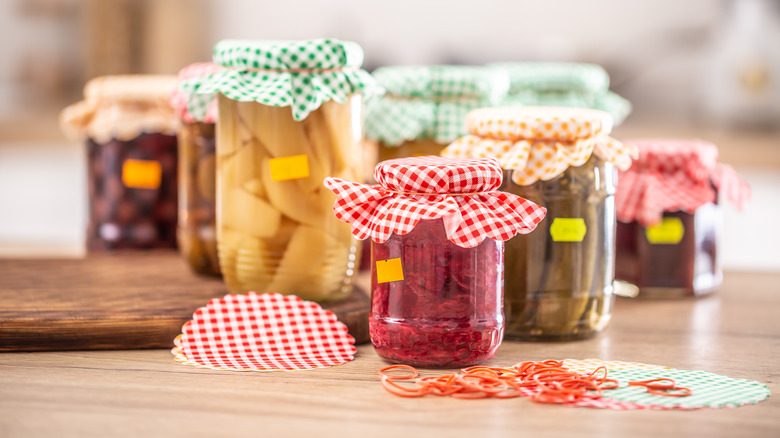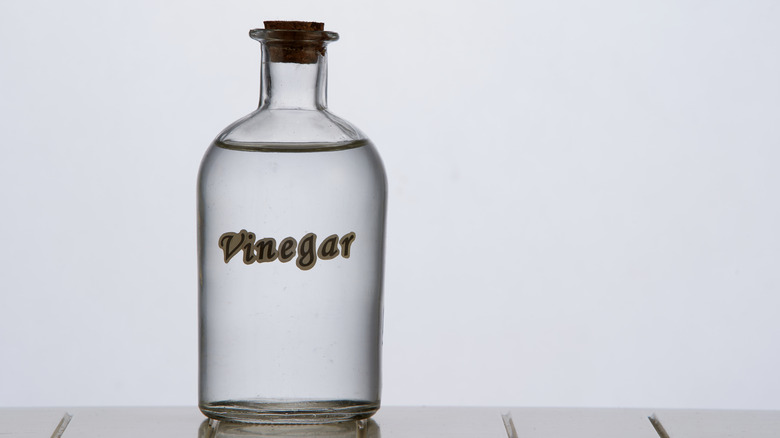The Reason You Should Never Can Food With Low Acidity Vinegar
Canning food at home is a tried and tested way to cut down on food costs in your house, but inflation is causing some serious problems with home-canned goods. Shrinkflation is when a business decides to decrease the cost of producing a product instead of raising the price for the consumer, usually by selling less of it. In the case of vinegar, some manufacturers are beginning to sell 4% acid strength instead of the standard 5% acid strength vinegar.
That 1% difference may not seem like a big deal — and for most uses, it won't be — but it can be deadly if used for canned goods. You don't put vinegar in your canned goods for the flavor. It's included because the acid keeps bacteria from forming inside the jar while it's on the shelf. There has been a lot of research done on home canning, but the studies all focused on 5% acidity vinegar because that was the gold standard. There haven't been any products below 5% until recently.
Many types of bacteria can form inside your canned goods, but the scariest has to be botulism. According to the U.S. Department of Agriculture, botulism grows best in the absence of oxygen and can cause serious illness or death. Part of the canning process is removing the air from the can. Because of this, canned goods have a high chance of containing botulism if not prepared correctly. The 4% acidity vinegar is not strong enough to kill the bacteria responsible for botulism.
How to choose the right vinegar for canning
The transition to 4% acidity vinegar hasn't been universal. You can still find plenty of 5% acid strength options at the store. The bottle's label should clearly state what strength the vinegar is. You can start by looking at the front of the packaging for any small print that displays the strength and, if you can't find it there, look at the ingredient list. It should display the vinegar's acidity.
The acid strength is often given as a percentage but can also be given as a grain. Ten grain is equivalent to 1%. So, for a 5% acid strength vinegar, that means it will be labeled as 50 grain. That's what you're looking for. If it says 40 grain, that's a 4% acid strength vinegar and you should not use it for canning food. If you can't find this information anywhere on the label, find a different product that does have it clearly written.
If you've already canned food using 4% acidity vinegar, unfortunately, the National Center For Home Food Preservation (via the University of New Hampshire) advised that you'll need to throw it out if it's been more than 24 hours. It's not going to feel good after having put in all the time and effort to make the cans, but it's a lot better than risking serious illness or death. If it's been less than 24 hours, store the jars in the refrigerator and treat them like any other refrigerated food. The 5% acidity vinegar will cost a little more, but don't be tempted to save a buck.

